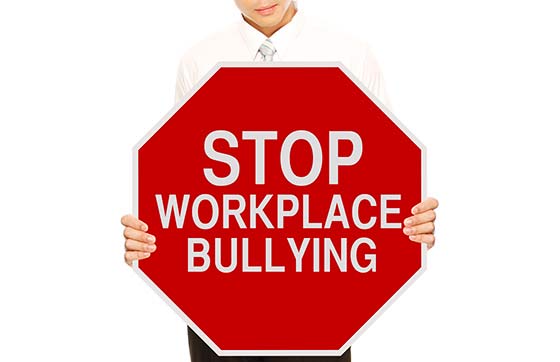The statistics show that workplace bullying is more common than you think. In a 2016 a survey conducted by the General Social Survey on Canadians at Work and Home (GSS) came out with the follow statistics:
- 19% of women and 13% of men reported that they had experienced harassment in their workplace in the past year.
- The most common type of workplace harassment was verbal abuse
- Workers in health occupations had the highest probability of reporting harassment on the job in the past year at 23%
For employers to ensure they are providing their teams with a healthy and safe place to work here are some tips to get you started.
Have a Clear and Thorough Anti-Bullying Policy:
Employers need to have an anti-bullying policy, whether or not their province has anti-bullying legislation. The anti-bullying policy is one that must be reviewed by all team and have a sign off of review.
The anti-bullying policy must also be clear to what is NOT considered bullying. Leaders need to have the ability to provide feedback and decision within their practice, and the policy needs to make that clear. Knowing that, leaders are responsible for how messages are delivered to avoid being perceived as threatening.
Start at the Top:
Make sure that all team and leaders are aware of the details of the policy. Having team members communicate and show their support is essential in minimizing acts of bullying in your practice. Leaders must also provide their team with a safe and consequence-free space to report any perceived bullying incidents. If the team member’s bully is their direct leader, the team members have to have a clear understanding that the owner will support and listen if they make an allegation as well.
Make it Part of your Culture
Training on workplace harassment and bullying is mandatory in many provinces, however regardless of whether there is a mandate it is a valuable way to bring awareness to this growing trend. Regardless of your method training, it is important that there be a record that your teams have received proper training in the event an incidence arises in the future.
Hold Everyone Accountable
It’s great to have a policy in place however if team and leaders are not being held accountable for following it is nothing more than a piece of paper. It is the responsibly of leaders to ensure that if someone does make any allegations about being bullied appropriate action is taken. This can be a thorough investigation that may lead to progressive discipline based on your findings. This is the only way to ensure that all employees are treated fairly and that employees know this is behaviour that your practice will not be accepted.
All rights reserved. No part of this work may be reproduced in any form, or by any means whatsoever, without written permission from Transitions Consulting Group Inc. If you would like further information about Transitions Group Inc.’s services please telephone 800-345-5157, email: info@tgnadental.com.
References
Canadian Centre for Occupational Health and Safety (1997-2012). Bullying in the Workplace. Downloaded on March 20, 2012 from: http://www.ccohs.ca/oshanswers/psychosocial/bullying.html
2016 General Social Survey on Canadians at Work and Home (GSS) From: https://www150.statcan.gc.ca/n1/pub/75-006-x/2018001/article/54982-eng.htm

